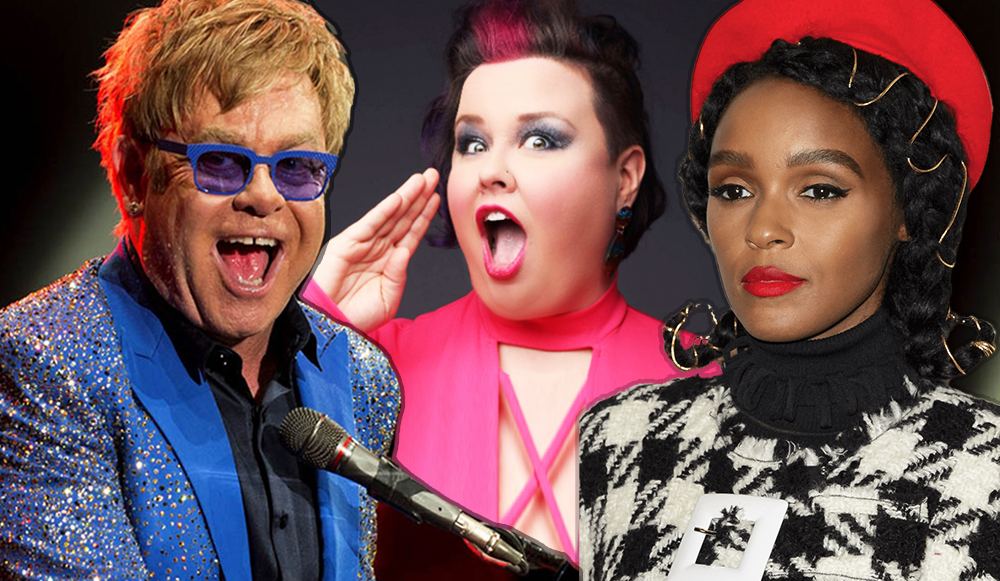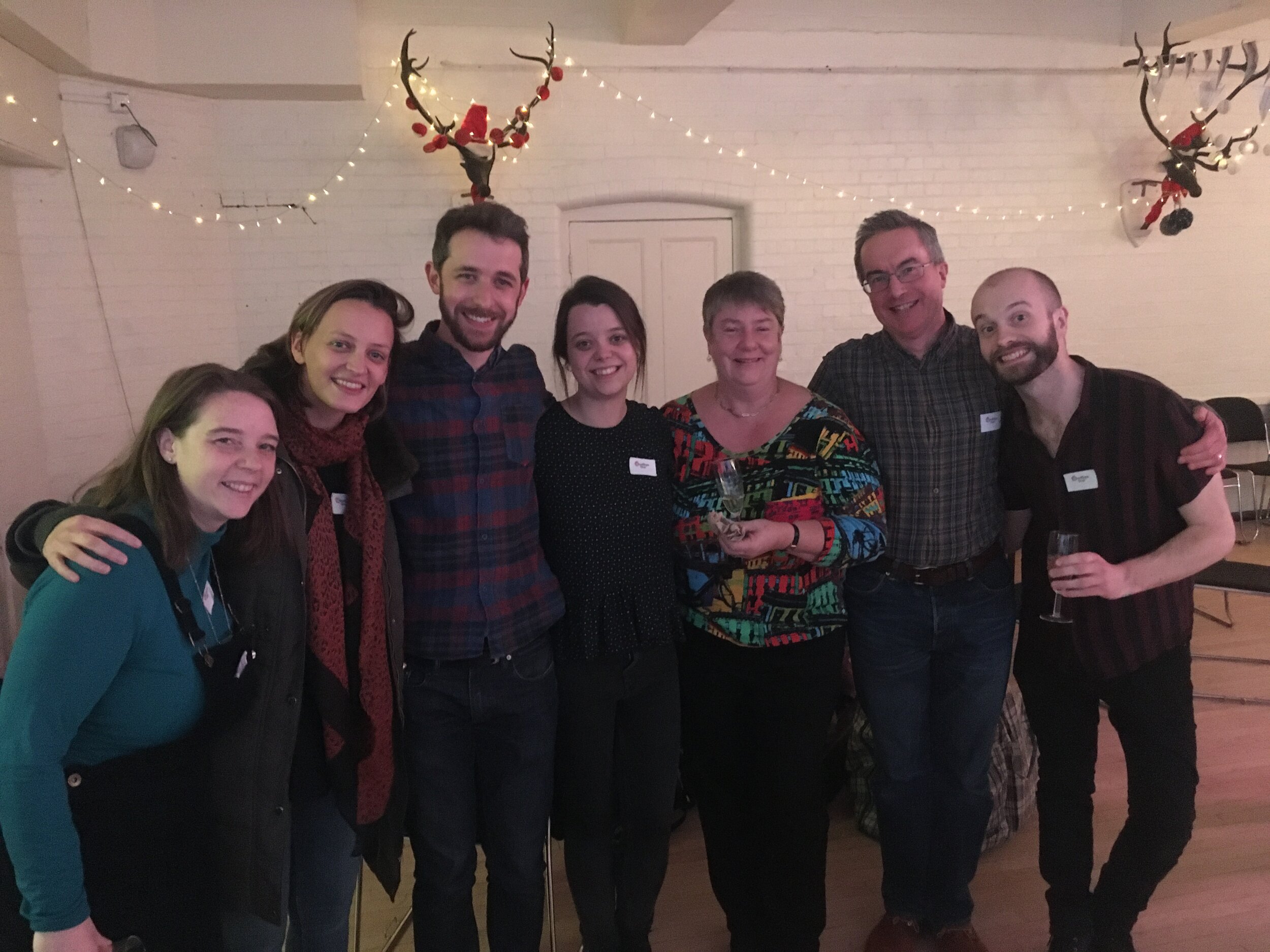Ready to make your playlist more inclusive? Then read on…
Here at Orchestras for All, we value equality, diversity and inclusion. That’s why for us, it doesn’t matter whether or not our young musicians (and others, of course) are gay, lesbian, bisexual, transgender, queer and questioning, intersex or asexual.
From rock stars to pop divas, and everyone in between, many of the world’s best-loved singers and composers are members of the LGBTQIA+ community – and we celebrate each and every one of them.
Are you in need of inspiration for your next playlist? Here are just a few musical icons who happen to be out and proud…
Read more: Watch this mesmerising digital work created by 100 young musicians >
1. Benjamin Britten
This late, great composer and pianist penned the score for several classical works, including 1945 opera, Peter Grimes, and ‘The Young Person’s Guide to the Orchestra’ (1946) – a playful piece that was recently adapted for the 100 young musicians in National Orchestra for All.
Although Britten lived in a time and place where homosexuality was illegal, the Suffolk-born composer was an openly gay man. His many love letters to tenor, Sir Peter Pears, were later used in an exhibition to mark the 50th anniversary of The 1967 Sexual Offences Act, the law that started the revolutionary process of decriminalising homosexuality in England and Wales.
2. SOPHIE
Scottish singer-songwriter and DJ, SOPHIE, is best known for releasing the avant-garde pop tracks ‘Bipp’, ‘Lemonade’ and ‘Faceshopping’, and producing new music for a number of high-profile artists – from Madonna and Kim Petras, to Charli XCX and Lady Gaga.
Despite having a loyal fanbase, SOPHIE had remained largely anonymous until releasing the single ‘It’s Okay to Cry’ in 2017, which was the first time the singer’s voice and image had been shared online. SOPHIE, who preferred not to use gendered or non-binary pronouns, used the video (see below) to come out as a trans woman. At the 61st Grammy Awards, the singer made history as one of the first openly transgender artists to be nominated in the category for Best Dance/Electronic Album – a huge step forward for the LGBTQIA+ community.
3. Jamie Barton
Quirky mezzo-soprano, Jamie Barton, has established herself as one of opera’s most exciting young artists, with her velvety rich tone and commanding presence. The nose-studded singer’s career highlights have included singing “The Star-Spangled Banner” for Macy’s annual 4th of July fireworks display, performing at 80th birthday galas for Sherrill Milnes and Marilyn Horne, and debuting a new work at Tanglewood with musicians Yo-Yo Ma, Emanuel Ax and Colin Jacobsen.
Jamie has also become a role model for those experiencing body shaming or issues over their sexuality. She told The Guardian, “I came out later in life, not because I was in the closet but because I didn’t know. I was doing Rheingold in Houston, Texas, in 2014 when I realised I was attracted to a woman. Six months later I came out fully. Bisexuality is too often seen as fake. Dearest friends said maybe you’re really a lesbian. And if you date someone of the opposite sex, it’s as if you’re straight again. Neither is the case for me. It’s so important to speak out.”
4. Sir Elton John
Legendary English singer, songwriter and composer, Sir Elton John, first started playing the piano at the early age of four. Since then, he has achieved record sales of over 300 million worldwide. His catchy singles, ‘Tiny Dancer’, ‘Your Song’ and ‘I’m Still Standing’, have all become household favourites with music fans and in 2019, the singer’s life was played out by Welsh actor Taron Egerton in musical biopic, Rocketman, which is based on Sir Elton’s song of the same name.
When asked what message he would share with young LGBTQIA+ people who are struggling with their sexuality or gender identity, the 74-year-old singer told Variety: “Just be yourself. It’s wonderful to be gay. I love being gay. I really do. I think I wouldn’t have had the life I’ve had if I hadn’t been gay. And I’m very proud of that.”
5. Halsey
Born in New Jersey, Halsey (Ashley Frangipane) first started writing music aged 17. In 2012, the electropop singer took to social media to share her songs and these soon caught the attention of other YouTube and Tumblr users – in particular, a parody of Taylor Swift’s song, ‘I Knew You Were Trouble’. Since then, Halsey has sold over a million copies of her chart-topping albums, which include Room 93, Badlands and Manic.
As well as regularly donating to pro-LGBTQIA+ organisations, Halsey often weaves her bisexuality into her music and speaks out about the challenges that come with this, such as erasure and the misconception that it’s just a phase. During a GLAAD Media Awards speech in 2018, she said: “I'm a young, bisexual woman, and I've spent a large part of my life trying to validate myself – to my friends, to my family, to myself – trying to prove that who I love and how I feel is not a phase. It’s not part of some confusion that's going to change or could be manipulated.”
6. Kim Petras
German pop star, Kim Petras, is another singer who recorded her own music as a young person and independently released her debut single, ‘I Don’t Want it at All’, in 2017. After going viral on Spotify, Kim released her debut album, Clarity, and impressed fans by launching a nine-week campaign that involved releasing one new single per week.
The LA-based singer, who came out as trans and began hormone therapy by the age of 12, has said it is crucial for parents to listen to young people when they say they have been born in the wrong body. Petras told the Washington Post: “I want to be a role model for young trans kids. My whole teen life was dedicated to saying, ‘Look, I’m transgender, I’m a normal person.’ I always want to keep fighting for the LGBTQIA+ community because that’s been my home.”
7. Freddie Mercury
Best known for being the lead singer of British rock band, Queen, Freddie Mercury blew audiences away with his energetic performances and impressive four-octave vocal range. His talent for songwriting was unmistakable – with hits such as ‘Bohemian Rhapsody’, ‘We Are the Champions’ and ‘Crazy Little Thing Called Love’ all making it to the top 10 of the UK chart.
While Freddie had preferred not to label his sexuality at the time, he openly enjoyed relationships with both men and women during his glittering musical career.
8. Janelle Monáe
Known for her daring fashion sense and infectiously catchy songs, Janelle Monáe landed her big break in the music industry after being invited by rapper, Big Boi, to perform with American hip-hop duo, OutKast. Today, the singer-songwriter, actor, activist and model has several albums to her name, including The ArchAndroid, The Electric Lady and Dirty Computer, and received eight Grammy nominations.
Although Janelle initially came out as bisexual, she told Rolling Stone: “Being a queer black woman in America, someone who has been in relationships with both men and women – I consider myself to be free… But then later I read about pansexuality and was like, ‘Oh, these are things that I identify with too. I’m open to learning more about who I am.”
9. Leonard Bernstein
When he wasn’t on stage leading prestigious orchestras like New York Philharmonic, American conductor Leonard Bernstein found joy through composing. In 1957, he wrote the beautiful score for musical West Side Story, which explores the rivalry between two teenage street gangs of different ethnic backgrounds, the Jets and the Sharks. The Broadway show and its memorable songs – including ‘Maria’, ‘America’ and ’I Feel Pretty’ – was later made into a movie by Robert Wise and Jerome Robbins.
Despite his 27-year marriage to TV star, Felicia Montealegre, Leonard Bernstein chose to have male lovers after she died. According to Arthur Laurents, who worked closely with the musician on West Side Story, Leonard was “a gay man who got married. He wasn’t conflicted about it at all. He was just gay.”
10. Kehlani
Kehlani Parrish first rose to fame as a contestant on season six of America’s Got Talent as part of teenage pop group, Poplyfe. The R&B singer and dancer later went solo, releasing albums such as Cloud 19 and You Should Be Here, but it was her single ‘Honey’ – an acoustic love song to another woman – that really caught the attention of the LGBTQIA+ community.
In April 2018, Kehlani shared a series of tweets explaining: “I'm queer. Not bi, not straight. I'm attracted to women, men, REALLY attracted to queer men, non-binary people, intersex people, trans people. lil poly pansexual.” Now, the singer – who has the word ‘fluid’ tattooed across her collarbone – identifies as a lesbian and is polyamorous. She told DIVA: “I have a lot of queer family. I remember being hella young and celebrating when gay marriage was legalised out here. My family went to Pride every year. I’m super blessed, very grateful.”
11. Thorgy Thor
Brooklyn-based drag performer, Thorgy Thor, has always loved dressing up. Known to friends and family as Shane Galligan, the self-taught performance artist became an instant hit with TV audiences after appearing as one of 12 contestants on the eighth season of popular TV series, RuPaul’s Drag Race.
Thorgy Thor – who plays violin, viola and cello and has a university degree in violin and viola performance – had expressed an interest in setting up her own orchestra during the show. In 2018, this dream became a reality when the unique ensemble, titled ‘Thorgy and the Thorchestra’, made its concert debut in Halifax, Nova Scotia.
12. Lil Nas X
American rapper and singer, Montero Lamar Hill (also known as Lil Nas X), became an overnight celebrity following the viral success of his 2019 country/hip-hop anthem, ‘Old Town Road’, on TikTok. As well as receiving 760 million views on YouTube to date, the standout track has also set a new record for the longest-running song at the No. 1 spot on Billboard Hot 100.
Following the song’s release, The Grammy Award-winner, who came out as gay during Pride Month, told CBS that public figures coming out will “always help” others who may be struggling but believes there is “still much to be done”.
13. girl in red
Norwegian singer-songwriter, girl in red (Marie Ulven Ringheim), emerged online after sharing DIY songs from her bedroom about sexuality and mental health. She told Complex: “I started making my way through GarageBand in 2017 and just recording all these feelings I was having and putting them on SoundCloud.” Her music and honest lyrics resonated with fans and she released her debut album, If I Could Make It Go Quiet, in April 2021.
Now, the indie pop star – who taught herself how to play the guitar and piano – has become something of a queer icon, with women often using her stage name in the question, “Do you listen to girl in red?”, when asking about each others’ sexuality.
14. Against Me!
Florida-based punk rock band, Against Me!, is the brainchild of lead vocalist and guitarist, Laura Jane Grace, who is currently joined by members James Bowman, Andrew Seward and Atom Willard. Keen to become a musician, Laura bought her first guitar aged eight with money saved from mowing lawns.
After meeting a transgender Against Me! fan, Laura felt the courage to share her identity publicly as a transgender woman. The musician’s personal experiences shaped much of the band’s art over the years – particularly their sixth studio album, titled Transgender Dysphoria Blues, which was released in 2014 and has been hailed by American heavy metal magazine, Loudwire, as one of the best rock albums of the decade.
15. Demi Lovato
From appearing in the musical comedy, Glee, to judging on the panel for The X Factor USA’s third and fourth seasons, Demetria Devonne Lovato has certainly been keeping busy. After releasing debut pop rock album, Don’t Forget, in 2008, Demi’s singing career has gone from strength to strength – with their second album, Here We Go Again, securing a No. 1 spot in the United States.
The performer, who received a Guinness World Record aged 19 for being the youngest ever X Factor judge, describes their sexuality as fluid and identifies as pansexual. She told EW: “I think time is everything. The queerness in me was, like, ready to explode when I filmed the music video at Pride. I was so ready to be an activist. I’ve always known I was hella queer, but I have fully embraced it.”
16. Rob Halford
With his powerful voice and larger-than-life stage persona, there’s no forgetting Rob Halford –the frontman of Brummie heavy metal band, Judas Priest. A pioneer of the pseudo-operatic vocal style, Rob also plays the guitar, bass, harmonica, keyboard and drums, and has performed with other famous bands throughout his career, including Black Sabbath, Metallica and Pantera.
The ‘Breaking the Law’ singer announced that he was gay during an MTV interview, making him the first metal icon to come out publicly. The musician also documented his initial struggle with his sexuality in his autobiography, Confess, and says that although his announcement was unplanned, it was a “glorious, glorious moment.”
17. Sir Michael Tippett
One of the leading English composers of the 20th century, Sir Michael Tippett’s music grew in popularity during and after the Second World War. His orchestral works include secular oratorio, A Child of Our Time (1935-41), Fantasia Concertante on a Theme of Corelli (1953), and dramatic opera, The Midsummer Marriage, which debuted at Covent Garden in 1955 and was led by conductor John Pritchard.
Sir Michael came out as gay in his mid-30s and thanks to his influence in the classical world, the composer became hugely influential in shaping public perception of homosexuality. He would often base his libretti (text written for opera) on these taboo topics of the time.
To support our inclusive community at Orchestras for All, please donate today >
If you have been affected by any of the topics covered in this blog and would like to find the right support, you can visit our wellbeing page for more information.











































